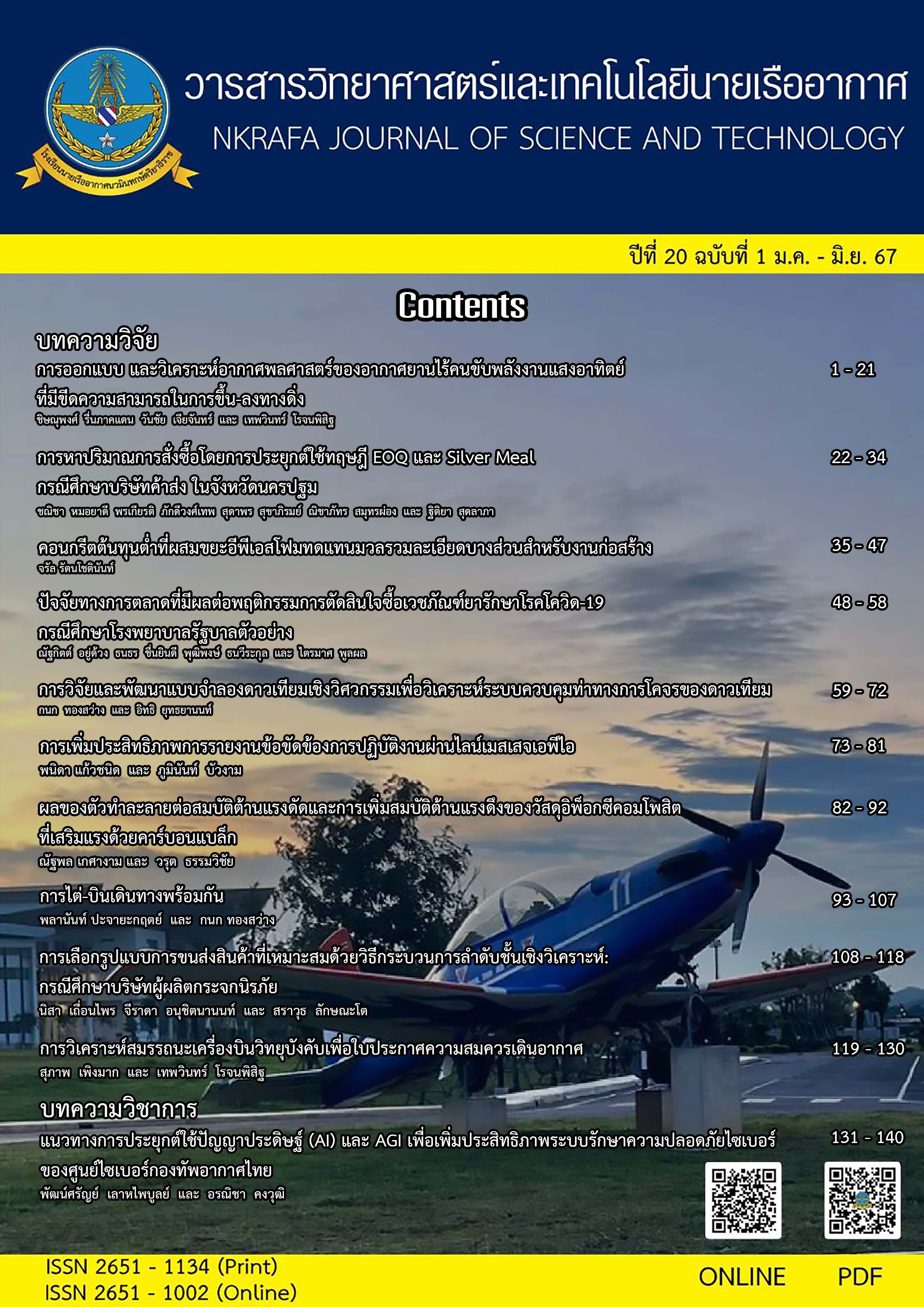RC Model Performance Analysis for Airworthiness Certification
Main Article Content
Abstract
Military UAV design and production must follow STANAG 4703 which is the Airworthiness for small UAV its weight less than 150 kilogram. This regulation is well-known and being used in various industry. In general takeoff distance is a critical phase of any aircraft because speed of the aircraft is near stall speed. Thus, to get the airworthiness of the aircraft, developer needs to make sure that their design can meet the requirements. The pre-calculation of this data is crucial to avoid unnecessary damage and STANAG allow to get this data from trustable program. Therefore, this research develops a MATLAB calculation using muti-step numerical analysis to calculate takeoff performance of the aircraft. This program has been tested to 4 aircraft compose of 2 general aircraft and 2 mini-UAV. The error of the result is less than 10%. Hence, we can use this program to calculate any other aircraft to get takeoff performance for airworthiness.
Article Details

This work is licensed under a Creative Commons Attribution-NonCommercial-NoDerivatives 4.0 International License.
- Content and information in articles published in NKRAFA Journal of Science and Technology are comment and responsibility of authors of articles directly. Journal editorial do no need to agree or share any responsibility.
- NKRAFA Journal of Science and Technology Articles holds the copyright of the content, pictures, images etc. which published in it. If any person or agency require to reuse all or some part of articles, the permission must be obtained from the NKRAFA Journal of Science and Technology.
References
Jr. Anderson, D. John. (2001). Fundamentals of aerodynamics. 3rd Edition. New York:McGraw-Hill Inc.
Mario A. (1997). An Introduction to Aircraft Performance. AIAA Education Series. American Institute of
Aeronautics and Astronautics, Inc.
S.K. Ojha. (1995). Flight Performance of Aircraft. AIAA Education Series. American Institute of Aeronautics and
Astronautics, Inc.
Cessna Aircraft Company. (2012). Specification and Description Exhibit “A”. Beginning with serial # 172S11284.
Cessna Single Engine Piston Aircraft. Wichita, Kansas.
McIver J. (2003). Cessna Skyhawk II / 100 Performance Assessment. from http://www.temporal.com.au.
Bitto A. & P. D’ Amore. Flight Test 2 Report. State College, PA, USA.
FAA Approved Airplane Flight Manual and Pilot’s Operating Handbook (1994). Warrior III PA-28-161. Publications
Department. Piper Aircraft Corporation.
Sóbester A. (2021). Flight-Test Validation of a Takeoff Performance Uncertainty Model. University of Southampton,
Southampton, Hampshire, England, United Kingdom.
Pellogrini C. et al., (2022). New analytical results on the study of aircraft performance with velocity dependent forces.
Universidade Federal de São João del-Rei, Departamento de Ciências Térmicas e dos Fluidos, Brasil.
Pascale L. & Nicolosi F. (2008). Design and Aerodynamic Analysis of a Light Twin-Engine Propeller Aircraft.
Tecnam Aircraft Industries, Casoria (Naples), ITALY. Dep. Of Aerospace Eng., University of Naples.
Vural M. (2009). Estimating R/C Model Aerodynamics and Performance. Illinois Institute of Technology. from
Butera J. (2012) Flight Performance of a Novel Fixed Wing UAS. Mississippi State University, USA. from
Scholz. Drag Prediction. (2023). from http://www.fzt.haw-hamburg.de/pers/Scholz/ HOOU/ AircraftDesign_13_Drag.pdf
Nato standardization Agency (2014). NATO Standard AEP-83 Light Unmanned Aircraft Systems Airworthiness
Requirements. Edition A Version 1, Ratification Draft.


